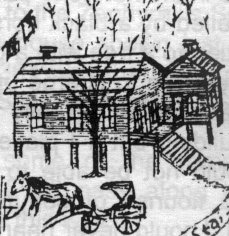HISTORY OF EDUCATION IN PASCO COUNTYGreer School
The History of Zephyrhills 1821-1921 by Rosemary W. Trottman has:
On Aug. 6, 1903, Willie Lee was appointed to teach at the Greer school, no. 39. On July 3, 1905, the Greer school was discontinued. On Aug. 7, 1905, the board rescinded the act of July 3 discontinuing Lake Buddy and asked that Greer combine with Lake Buddy. On Oct. 2, 1905, a special school was established at Greer for the term, as the Lake Buddy school was not large enough. On July 5, 1909, Fannie Mobley was appointed the teacher. On July 7-8, 1913, Miss Agnes White was appointed the teacher. On Feb. 1-2, 1915, Clarence H. Martin was assigned to finish the term at Greer for $75 per month. The following is excerpted from It Took A Lot of Living to Fill Those 90 Years, ©1996 by David I. Cripe:
On Aug. 2, 1915, Clarence H. Martin and Vera Martin were appointed to teach at Greer. A 1915-16 list of schools shows the Greer school, served by the Dade City post office, with 61 students. The teachers were Clarence H. Martin and Miss Vera Martin. (According to McCormick, Mr. Martin taught grades 4-6 and his daughter Vera taught grades 1-3.) The minutes of the school board meeting on Sept. 4-5, 1916, have: “Upon motion of Mr. Roberts seconded by Mr. McKendree, board voted to appoint Miss Miriam Ross as teacher for the Greer school, provided Miss Ruth Davis refuses to accept. Said appointment being made, recognizing the authority of Trustees to nominate elapsed with the appointment of Miss Ruth Davis.” In an article in East Pasco’s Heritage, Alice Daniel wrote, “For one term our school district was in dispute, and we had to attend school in Greer. We walked a sand road a mile to this two-teacher school. The next year they allowed us to walk the three miles to the Zephyrhills school.” On Sept. 7, 1919, the Tampa Morning Tribune reported, “The Greer school children are transported to Zephyrhills by Paul Overstreet, he having purchased a car about two weeks ago.” On July 5-6, 1920, the board voted to transport students living in Greer to Zephyrhills. On July 5, 1921, the board approved a petition from the residents of Greer that they be allowed to unite with Sand Pond. |

 According to information provided to this website by a local researcher,
the Greer School was located approximately 5½ miles south of Dade City, on the east side of US 301, near the bottom of
the south side of Greer Hill.
According to information provided to this website by a local researcher,
the Greer School was located approximately 5½ miles south of Dade City, on the east side of US 301, near the bottom of
the south side of Greer Hill.